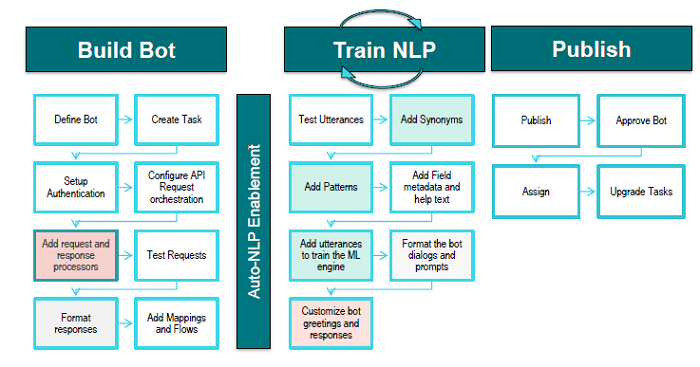The Bot Builder provides a web-based tool with a repeatable process to design, develop, test and deploy smart chatbots at enterprise scale. You can do all this even without the code, custom software, significant server space, or major changes to your infrastructure.
A typical Bot development lifecycle includes the following steps:
- Create tasks using GUI based dialog builder;
- Train the bot to improve its performance;
- Publish the bot.

This section describes how our Bot Builder enables you to easily build chatbots for any use case or channel.
The Chatbot Building Process
The following table lists the key steps in building chatbots along with links to useful documentation.
| Define & Build | Train | Enable |
|---|---|---|
|
Select a Bot type as per your requirements: Create a task that closely represents your bot |
Refine your bot’s natural language using a step-by-step approach |
|
| Test | Publish | Analyze |
|
Test your bot configuration and settings, from request chaining to intent recognition, conversation flow, and more. |
Publish your bot to the desired users and groups |
Manage updates centrally and measure ongoing performance. |
